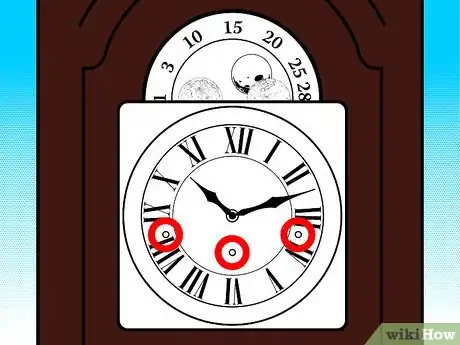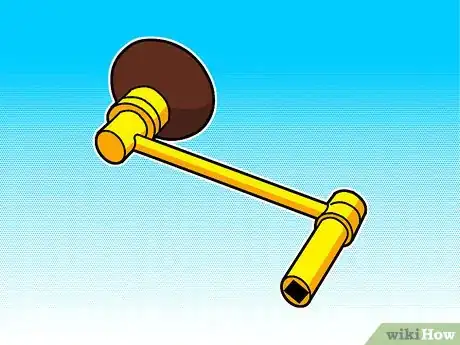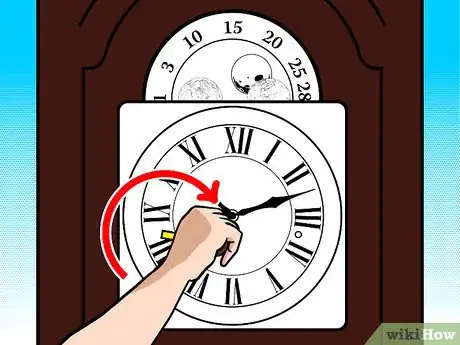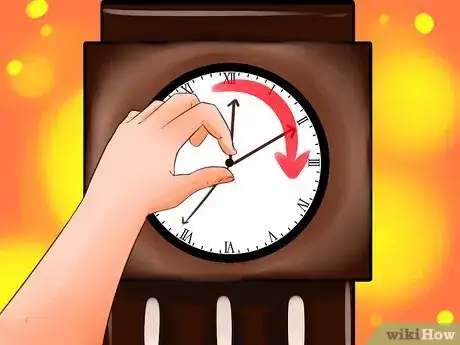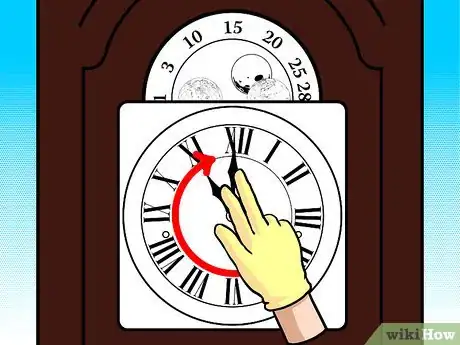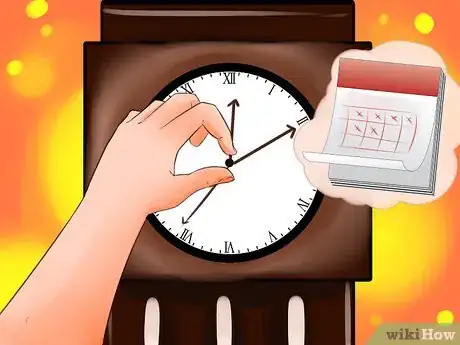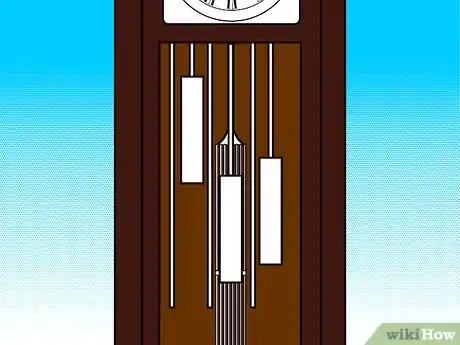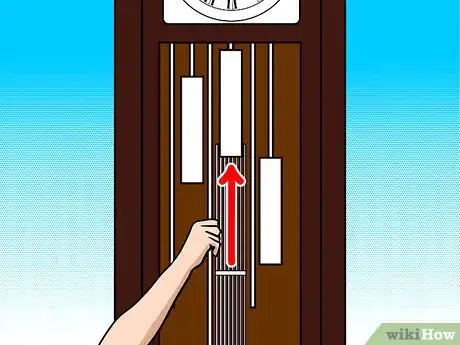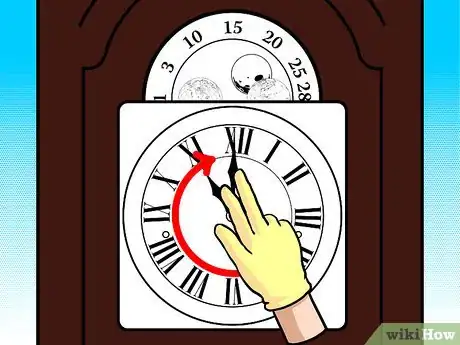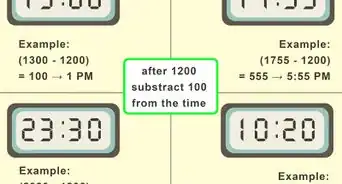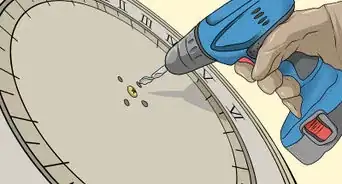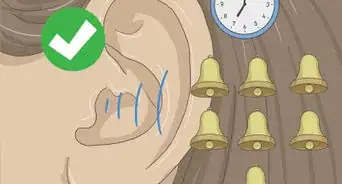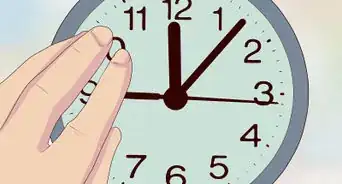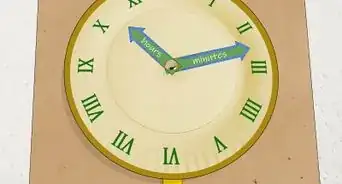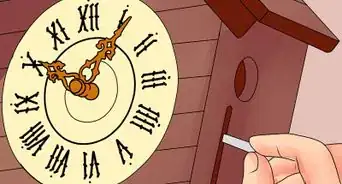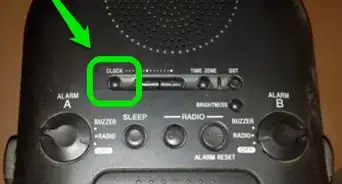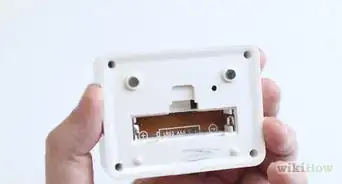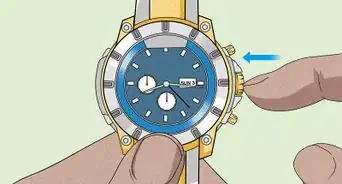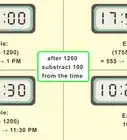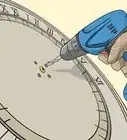wikiHow is a “wiki,” similar to Wikipedia, which means that many of our articles are co-written by multiple authors. To create this article, 18 people, some anonymous, worked to edit and improve it over time.
wikiHow marks an article as reader-approved once it receives enough positive feedback. In this case, several readers have written to tell us that this article was helpful to them, earning it our reader-approved status.
This article has been viewed 234,449 times.
Learn more...
Clocks made in the old-fashioned tradition require winding in order to operate. Grandfather clocks are freestanding timepieces of this type, controlled by the fall of weights and the movement of a pendulum in a tall case. Follow these instructions to wind any type of grandfather clock.
Steps
Winding a Crank-Wound Clock
-
1Look for the winding points. If your grandfather clock is wound by a crank or a key, it should have one to three small holes on the clock face. Most commonly, these are located near the 3 (III), the 9 (IX), the center, or anywhere in the lower half of the clock face. If you do not see a hole, and your clock did not come with a crank or key, see the instructions for chain-wound clocks instead.
-
2Obtain a clock crank or key of the correct size. Newly purchased clocks of this type should come with a key or crank, but if you acquired a used clock, or misplaced the winding implement, you can find a new one online or from a clockmaker. Open the door protecting the clock face, and measure the width of each hole precisely using a ruler or tape measure with a millimeter scale (mm), or preferably a set of calipers that can measure in 0.25 mm increments.[1] Purchase a crank or key with this shaft width for safe and easy winding. You may wish to purchase three or four winding implements in different sizes, in case your measurement was slightly off.
- Note: When purchasing a crank, make sure the length of the shaft is sufficient to raise the crank above the level of the clock hands, so you can turn it 360º without damaging them.[2]
- Some manufacturers sell keys in a numbered scale, rather than by shaft width. However, there is no single industry-wide scale, so referring to the exact millimeter size is recommended.[3]
Advertisement -
3Use the crank or key to wind the first weight. Gently push the shaft of the crank or key into any one of the winding holes. It should be a snug fit, but do not force it in. Gently hold the clock face steady with one hand, and use the other to gently turn the crank. Try turning in both directions, and see which one moves smoothly; each individual clock winds either clockwise or counterclockwise. One of the long weights lower down in the clock should rise as you turn. Stop turning right before the weight touches the wooden "seat board," or when the key no longer easily turns.[4]
- If you cannot turn the key easily, or you do not see a weight moving, check to see if one of the weights is already at the top. If one or more of the chimes is turned off, the weight responsible for timing that chime will not fall, and does not need to be wound.
- The weights are typically located above the pendulum. You may or may not need to open the lowercase in order to see them.
-
4Repeat the process for the other winding points. If your clock has more than one weight, it should also have more than one winding point in the clock face. Move the crank or key to the remaining winding points, turning it in each one until every weight is nearly touching the wooden board above it.
-
5If necessary, make adjustments carefully. Now is a good time to check whether the clock is still displaying the correct time. If not, you may physically move only the minute hand to the correct time, moving it clockwise only. Always stop at the 12 (XII) and allow the clock to strike the hour before continuing.[5] Do the same for other points if the clock chimes at additional times (typically the quarter hours at the 3, 6, and 9).
- There are some clocks that can safely have their minute hand turned counterclockwise, but do not risk it unless you are certain. If the minute hand "resists" attempts to move it clockwise, and can move smoothly counterclockwise, you may have an unusual model that should be adjusted counterclockwise.[6]
- If your clock is running too fast or too slow, find the knob or nut at the bottom of the swinging pendulum. Tighten it clockwise in order to slow the clock down, or loosen it counterclockwise to speed it up.
-
6Wind weekly, or as necessary. Almost all grandfather clocks are made to run for seven or eight days without winding, so winding them on the same day each week will ensure that it never stops. If your clock stops before its regular winding time, however, you may need to wind it more frequently.
Winding a Chain-Wound Clock
-
1Look for chains hanging next to the weights. Open the door protecting the long, hanging weights in the clock case (not the pendulum). Most clocks have one, two, or three weights, but there may be more on unusual models. If you see a hanging chain next to each weight, your clock is probably chain-wound.
- If you cannot find either a chain or a winding hole in the clock face, ask someone to help you look, or consult a professional clockmaker or clock repair shop.
-
2Gently pull on one of the chains. Grasp a chain hanging next to a weight that is not at the top of the case. Slowly pull down on the chain and watch the weight rise. Continue until the weight is almost touching the board at the top of the weight case, or until you cannot move the weight by pulling at the same gentle rate.[7]
- Pull on the chain next to a weight, never the chain the weight is attached to.
- It does not matter which weight you wind first.
-
3Repeat with the other weights. Each weight has its own chain. Gently pull on each of these until the weight associated with it has nearly touched the board above the weights. Your clock is fully wound once all the weights are in the top-most position.
- Typically, the center weight controls the clock's timekeeping. If other weights are present, they control the hour strike, or the quarter-hour chime.
-
4Make adjustments if necessary. Physically rotate the minute hand, not the hour hand, of the clock if you need to set the time. Rotate clockwise unless you feel resistance in that direction, and use your free hand to steady the clock face as you turn. Be gentle to avoid bending or breaking the clock hand, and stop and wait for the clock to strike or time before continuing to move the hand.
- A nut on the bottom of the pendulum can be tightened to slow the clock down, or loosened to speed it up. Adjust this if you find yourself adjusting the time every week or two.
Community Q&A
-
QuestionWhat is the order of sequence for the weight? My clock doesn't have the left, middle and right letters on the bottom.
 Community AnswerThe heaviest weight is on the right. Light weights are in the center and left. On the right side, as you are facing the clock, the right weight usually runs the quarter hour chimes. The other two are for hourly chimes and clock movement.
Community AnswerThe heaviest weight is on the right. Light weights are in the center and left. On the right side, as you are facing the clock, the right weight usually runs the quarter hour chimes. The other two are for hourly chimes and clock movement. -
QuestionWhy won't the pendulum keep swinging?
 Community AnswerIs your clock even? If the clock is not on even ground, it throws off the pendulum.
Community AnswerIs your clock even? If the clock is not on even ground, it throws off the pendulum. -
QuestionMy clock strikes the wrong hour. How do I correct it?
 Community AnswerIf it is only the number of strikes that is wrong, simply move the hour hand to match the number of strikes. It is only held in place by friction, unlike the minute hand which has a hard connection.
Community AnswerIf it is only the number of strikes that is wrong, simply move the hour hand to match the number of strikes. It is only held in place by friction, unlike the minute hand which has a hard connection.
Warnings
- Do not force the key or crank into the winding points.⧼thumbs_response⧽
- If the key or crank is not turning smoothly or the chains will not pull downward, do not continue. Contact a professional.⧼thumbs_response⧽
Things You'll Need
- Clock key or crank
References
- ↑ http://www.johnwardle.co.uk/what-type--size-of-key-do-i-need--40-c.asp
- ↑ http://www.johnwardle.co.uk/what-type--size-of-key-do-i-need--40-c.asp
- ↑ http://www.johnwardle.co.uk/what-type--size-of-key-do-i-need--40-c.asp
- ↑ https://ticktocktony.com/Clock-Repair-How-To-Articles/how-to-wind-a-clock.html
- ↑ https://www.youtube.com/watch?v=YwuerDyNH-g with https://www.youtube.com/watch?v=Kp2Ll7YJ3qw
- ↑ http://www.theclockdepot.com/grandfather_clocks_manual.html
- ↑ https://ticktocktony.com/Clock-Repair-How-To-Articles/how-to-wind-a-clock.html
- ↑ https://ticktocktony.com/Clock-Repair-How-To-Articles/how-to-wind-a-clock.html
About This Article
To wind a grandfather clock, start by locating the winding points on the face of the clock, which are usually close to the 3, the 9, and the center. If you don’t have a key, measure the openings in millimeters, then purchase a new key online, or from a clockmaker. Next, insert the key into the first winding point and rotate it until it no longer turns easily. Then, repeat this process with the two other winding points. Finally, check to see if the clock is still displaying the correct time, and make adjustments as necessary. To learn how to wind a chain-wound clock, read on!
